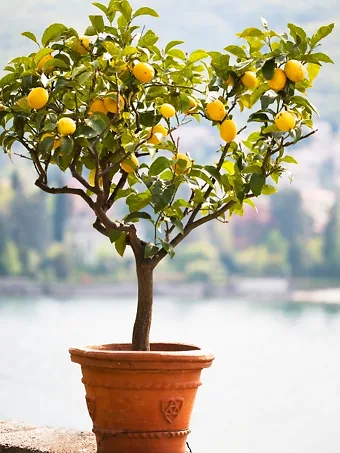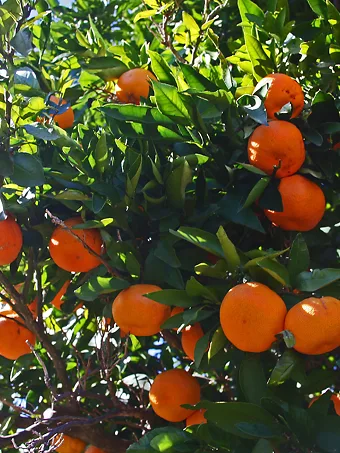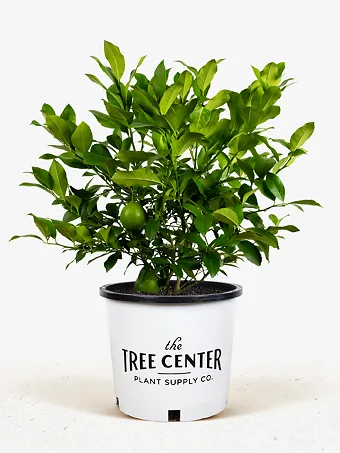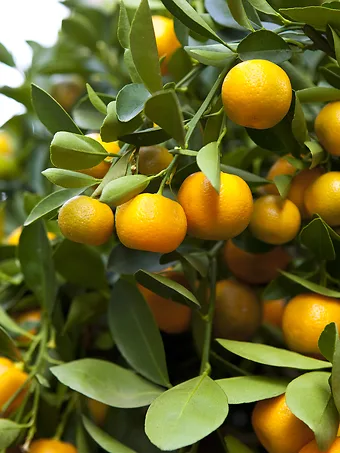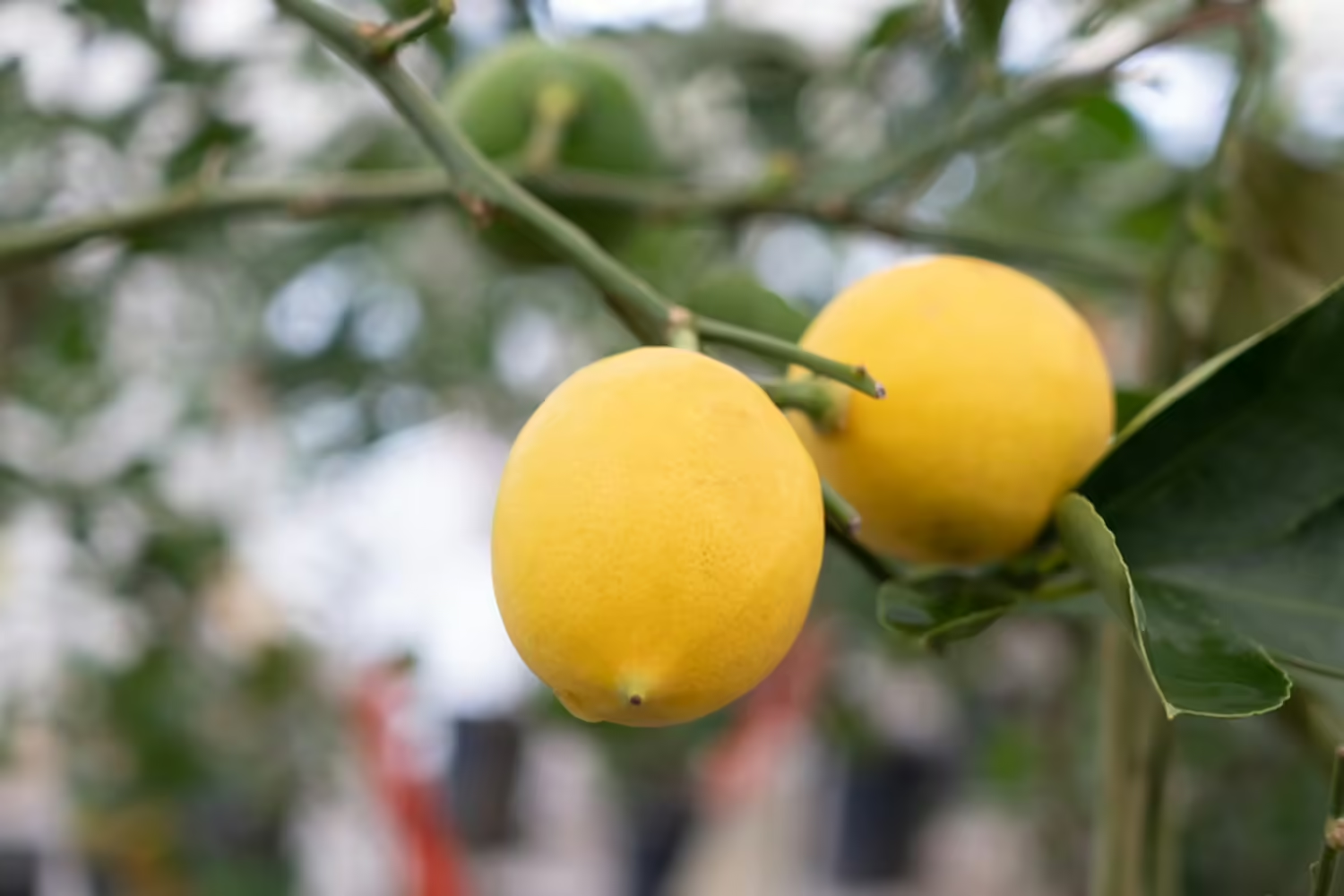
Written by s • Meyer Lemon Tree Guide
Dwarf Meyer Lemon Tree
Lemonade, lemon chicken, salmon, blueberry coffee cake, oysters, any dish garnish, lemon squares, lemon cakes, key ingredient, and so much more – lemons are an intrinsic part of our diet, culture, and life. Access to lemons, however, is not always so easy. Considered a warm-weather fruit, many amateur gardeners and homeowners would never consider having their very own lemon producing tree.
Lemons are no longer a forgotten grocery-list item, though. The prolific Dwarf Meyer Lemon Tree is a small specimen that thrives in much of the United States. Warmer regions, consisting of the USDA zones 8 to 11, can grow the tree outdoors all season long. But growers in colder regions are also in luck – the Meyer Lemon Tree can be grown as a container plant indoors and on the patio in USDA zones 4 to 11 – that includes every contiguous state in the nation!
Not only does the Meyer Lemon Tree provide edible (and delicious) produce, the tree is also fragrant and impressive to behold. Vibrant yellow fruit will grow steadily on the branches of this dwarf-sized plant, offering you the valuable lemon fruit without the hassle of shopping and planning. The lemons do not ripen all at once, which means you will be able to utilize a larger percentage of your tree’s fruits and still have some to share with others.
The pleasant smell of the lemon tree also provides a strong case for this container-friendly tree. Gentle, sweet flavors of lemon will waft through rooms. Rid your house of chemical fragrances and air fresheners – the Dwarf Meyer Lemon Tree can take care of it for you.
Even if you live in a small urban apartment, the Dwarf Meyer Lemon Tree can grow successfully to produce its delectable fruits. Urban growers love the Meyer Lemon Tree for this reason, choosing to enjoy the lemons and their fragrance.
Meyer Lemon Tree Care
Your new Meyer Lemon Tree can be grown inside or out, providing you with a host of decisions to make prior to planting your new fruit tree. The choice will be determined by your climatic region and your growing space. We will delve a little more into best practices for growing Meyer Lemon Trees indoors next, but first let’s talk about what you will need to do to help your Lemon tree produce bountiful fruit in a healthy way, regardless of where you choose to plant it.
The Dwarf Meyer Lemon tree prefers full sun, consistent but minimal to moderate waterings, sandy to loamy potting soil, good drainage, and fertilizer. Given these conditions and appropriate planting procedures, your Meyer Lemon Tree will offer sweet lemons, fragrances, and growth in a short span of time.
In order to harvest delectable lemons from your tree, you will need to be sure the fruit is ripe before picking. Unlike many other vegetables and fruits, citrus fruits will not continue to ripen once off the tree. Look for a rich yellow, similar to the yolk of an egg. For the best results, use scissors or clippers to remove the fruit so as not to damage the vine.
One other tidbit – though pests are not a frequent problem with the Meyer Lemon Tree, occasional bouts of aphids or borers have been known to attack the tree. The best way to diminish pest concerns is to practice preventative measures, such as ground clean-up and weeding. If pests do become an issue, a regular commercial pesticide can often remove any concerns.
Sunlight Exposure
It should not be surprising that a citrus tree, such as the Lemon Tree, would love the sun. Oranges, grapefruits, lemons, and limes are all satisfied sun-bathers. They also prefer warmer temperatures, ranging between 50°F and 80°F. This impacts growers in colder regions, who may need to bring the Meyer Lemon Tree indoors for a season. Cloudy or rainy areas may also need to provide some additional sunshine to their plant using artificial means. This is not usually required, but it may increase the growth and production of the Meyer Lemon Tree to use a greenhouse or greenhouse lighting fixture to help your Lemon Tree grow.
Water
Unlike many other fruit trees, citrus trees like the Meyer Lemon Tree grow best in slightly sandy soil. Sandier soil, which is composed of larger grain sizes, is better at draining water than heavy clay-like soils. For citrus trees, which prefer damp but not wet soil, sandier soils can be beneficial.
Do not misunderstand, though. Your Meyer Lemon Tree needs water. Your tree will be most successful if watered consistently and frequently. This is also why the tree needs soil that drains well, so it doesn’t get stuck with “wet feet”. Letting the soil dry out between waterings can help ensure it stays moist without being wet. Regulated watering systems, like drip or sprinkler irrigation systems, can be beneficial in dispersing proper water amounts regularly.
Soil
Soil is typically categorized into three or four main types; clay, silt, sand, or loam. For the Meyer Lemon Tree, you are looking for a sandy-loam soil type. This will allow for the best drainage without drying the soil too quickly. Potting soils should be used if garden soil is not amenable. The nutrient matter of the soil can have an impact on the tree’s overall growth. Soils characterized by higher nitrogen amounts will be better suited to growing the Meyer Lemon Tree, although adjustments to soil composition through the use of fertilizer are also possible.
Meyer Lemon Tree Indoors
For many growers in the United States, four-season lemon outdoor growing is simply not possible. The Dwarf Meyer Lemon Tree cannot survive extended periods of temperatures below 50°F, so for some gardeners partial indoor growing can be a valuable option. Luckily, the Meyer Lemon Tree is superb in a container (and looks quite snazzy, too), so cooler climate gardeners rejoice!
Growing the Meyer Lemon Tree indoors requires a container. The first mistake gardeners make when beginning a container plant is choosing an inappropriately sized container. The container of your Meyer Lemon Tree should be twice the size in terms of width of the Lemon Tree’s root ball. This will allow enough room for the roots to expand and for water and nutrients to move throughout the container. This is especially important for your Meyer Lemon Tree, which requires good drainage. Room can be essential to this air, water, and root movement.
The next step in growing a container Meyer Lemon Tree is to secure a moving device. The Meyer Lemon Tree, though dwarf-sized, can become quite heavy (especially when heavy laden with delicious fruits). When the weather begins to cool, growers need to be able to move their Meyer Lemon Tree indoors. Many gardeners use a heavy tool hauler, and there are many commercial or do it yourself hauler projects available. The hauler or wagon you use should be easy to fasten. Many of these haulers can be laid under the container and simply attached to the lever or lifting device when it is time to move it.
The final point to consider when bringing a Meyer Lemon Tree indoors is room and sunlight requirements. If possible, a full season greenhouse is the best option. Temperature controls and artificial sunlight will be a huge benefit to your tree. But, let’s be frank. A dedicated greenhouse for your Meyer Lemon Tree may not be realistic for many tree growers. A room with heat access and plenty of light will suffice. Be sure to not place your Meyer Lemon Tree directly adjacent to any heat source, as the heat could damage the tree if too close.
In the end, you’ll have the delightful aroma of lemon wafting through the home and an interesting horticulture conversation piece whenever guests visit.
Meyer Lemon Tree Pruning
Pruning your Dwarf Meyer Lemon Tree will be beneficial to both the tree and you. Be careful: Meyer Lemon Trees do produce thorns, and though these are smaller and gentler than other thorn tree varieties, it is still unpleasant to snag one on your hand. Wear gloves and use sharp, clean clippers when pruning.
When to Prune
The pruning will help to encourage healthy growth and should be done after all mature lemons have been removed from the tree or just before flowering. Occasional pruning will be helpful, but do not overdo it. Gardeners can become overzealous in their pruning of citrus and damage future generations of fruiting. If you are growing the tree indoors, the best times to prune are just after moving the tree.
What to Prune
First, remove any dead, diseased, or damaged wood. Cut these branches at the intersection where they meet with the tree’s main branch, whether central to the tree or an auxiliary. Some gardeners are unsure how to determine whether a branch falls into these categories. Dead wood will have a hollow sound or a lighter touch. Diseased wood will have blemishes or fungal remnants. Damaged wood will have cuts, abrasions, or breaks along the branch.
Remove any suckers from the tree. These will display bright green shoots and appear between the root ball and graft sight of the Meyer Lemon Tree (the graft sight is the vertical scar on the base of the tree where the healthy Meyer Lemon Tree was grafted to the main root ball). Though they may look healthy, these suckers will scoop up the valuable resources of the tree and not produce any lemons.
The next step is to thin out the tree. Remove any thin branches that would not support the weight of a lemon. Also, thin out the interior of the tree. Look beneath the outer branches and clear out any heavy interior growth. These will likely not get enough sun to produce viable fruit – by removing this growth you can help divert resources towards the branches best-suited toward growing healthy fruit. You can also trim the tree to shape it in a way that is aesthetically pleasing. After pruning, be sure to clean out the soil beneath the tree of any cuttings or dead leaves. This will help prevent the spread of fungi or pests.
Meyer Lemon Tree Fertilizer
The Dwarf Meyer Lemon Tree is a healthy, hearty plant; yet, it will benefit from the use of fertilizer. Citrus plants require higher levels of nitrogen in order to grow healthy, edible fruits. Using a fertilizer high in nitrogen, therefore, is a great step to take if delicious fruits are to be in your future.
The directions and application processes for different fertilizers vary dramatically. Purchase a commercial fertilizer from your local horticulture vendor and follow the package’s directions. In general, fertilizers are most successful when applied once or twice a year. Citrus Trees, like the Dwarf Meyer Lemon Tree, will likely benefit from an early spring application and a mid to late summer application. Regardless, the commercial fertilizer directions may vary.
Be careful not to over-fertilize. Fertilizer is great – it increases the necessary nutrients in the soil, it encourages tree growth, and helps the tree compensate for poor growing conditions, weather, or damage. However, applying too much fertilizer to the Meyer Lemon Tree can also have devastating effects. Like most things, balance is essential.
You should feel confident that you can plant your Meyer Lemon Tree with confidence and care. Delectable lemons fresh off the tree await you and your kitchen table. Enjoy some fresh homemade lemonade or out-of-the oven lemon squares. Not only are lemons useful in all sorts of kitchen cooking and baking ways, they can also be used to make homemade cleaners and soaps. Place this bright ornamental tree as an accent décor piece, in the house or in the yard. Be prepared to harvest sweet, delicious lemons and share them with your friends. And you know what they say – when life doesn’t give you lemons, plant a lemon tree and get your own.
Save
